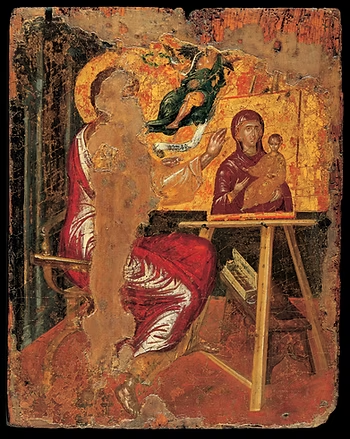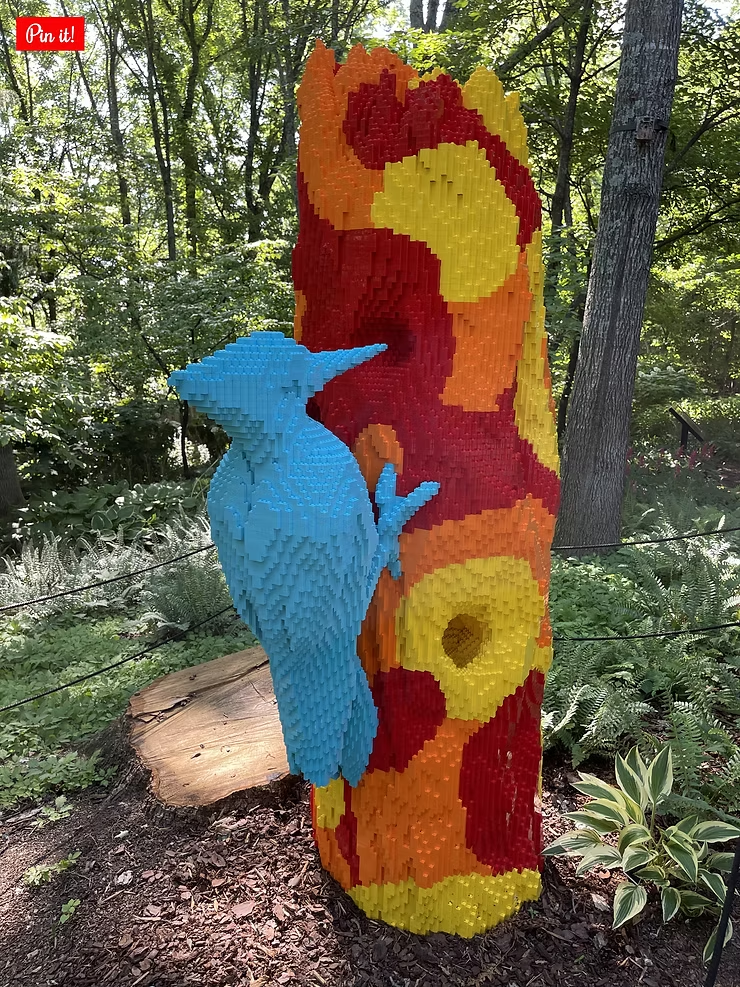Considering the ubiquity of modern tulip bulbs lining the shelves and overflowing the bins of nearly every garden center during autumn, it is hard to imagine that these onion-appearing bulbs were once rare, PRIZED jewels, just three centuries prior. Now packaged in mesh bags, they are sold by the dozen, or two, in colors that are mixed, pink, red, yellow … the choices unlimited. It’s a blessing that they are so inexpensive today, as the bulk of the ones I plant seemingly get dug up and carried away by squirrels, no sooner than I bury them the recommended 6″ depth.
Exotic Orient Origins
Tulips were originally wildflowers from the mountains of Kazakhstan in Central Asia. It was the Seljuk Turks who FIRST CULTIVATED the tulip, as early as 1000 AD, and introduced them to Anatolia. They later incorporated tulip motifs into their artworks. These motifs continue to be seen in the Iznik tiles, wall paintings, vases, Islamic prayer rugs, and even carpets in mosques, for example.
When Constantinople was conquered by the Ottoman Turks and re-designed as Istanbul in the 15th century, the parks and gardens of Istanbul became abundant with the colors of tulips, which later became their national flower. The Ottomans cherished this uniquely shaped single flower consisting of four crescent-shaped petals, each flower erect on its own single upright stem. The composite not only resembled their turbans but also the word “Allah”, as written in Arabic script. The four petals and the stem, together, symbolized the five pillars of Islam: faith, prayer, charity, fasting during Ramadan, and pilgrimage to Mecca.
Sultan Mehmet II, himself, was a keen gardener and took a personal interest in planting tulips all around the Topkapi Palace. When I visited Istanbul, last year, I noted an abundance of tulips decorating the city, particularly in the courtyards of the Topkapi Palace, the gardens of the Hagia Sophia and the Blue Mosque, at the Hippodrome, and the public grounds throughout the Sultanahmet neighborhood. April is an ideal time to visit Istanbul, as the city hosts an Annual Tulip Festival and there are brilliant splashes of color everywhere you look.
Immigration to Europe
Tulip bulbs, a phenomenon NEW to the West, first arrived in Holland from Istanbul in the 16th century. The ambassador of Emporer Ferdinand I to the Ottoman Sultan, Suleyman the Magnificent, astonished by the beauty of the varieties grown in the Ottoman court, sent the bulbs to Vienna to the botanist Carolus Clusius who was the director of the Imperial Botanical Garden in Vienna. When Clusius moved to Leiden, Holland in 1593 to establish the first botanical gardens amidst Holland’s flat, swampy landscape, he took the bulbs with him. There, through a series of dikes and canals built to drain the land, the land was made arable. Within a short time, colorful palettes of tulips painted the vast fields of the Dutch countryside. The RADIANT COLORS were particularly welcomed with a feeling of joy subsequent to the long gray winter. You can still enjoy these breath-taking bulb fields when biking or driving across the Dutch landscape, particularly in regions such as Westland and Aalsmeer near Leiden. Areas north of Amsterdam and even further north of Alkmaar also host numerous tulip fields. I visited Sint Maartensvlotbrug in the region called the Province of Noord Holland, where many fields are located along both sides of the Noord Holland Kanaal. Another area in the northern Netherlands where the tulip fields are sprawling and abundant is Flevoland. Here you can see never-ending carpets of color. I happened to visit Holland in the month of October and witnessed the planting of the tulip bulbs. The best time to see blooming tulip fields in Holland is in mid-late April.
The 1600s were a time of great prosperity for the Dutch, as they benefitted financially from global trade and colonization. Many wealthy merchants accessorized their homes with commissioned paintings of landscapes, still-lifes, and portraits. Being primarily Calvinists, religious-themed paintings were prohibited. The Dutch loved flowers so paintings of flowers, particularly tulips, were common still-life themes. The paintings below are by various 17th-century Dutch artists, such as Jan Davidsz de Heem, Ambrosius Bosschaert, Maria van Oosterwijck Hans Bollongier, and Jacob Marrel. They all feature tulips! Many such paintings can be viewed at the Rijksmuseum in Amsterdam. To this day, the Netherlands is the leading exporter of flowers.
The Dawn of a Craze
Displaying their prosperity and fortunes was common sport amongst the Dutch, as they took delight in fancy canal homes, paintings, and ultimately TULIP BULBS. Indulging in flowers became a national pastime. Tulips, in particular, became so popular in the early 17th century, that Tulipmania erupted, during which time rare tulip bulbs were traded for UNGODLY SUMS of money or goods. That lasted primarily three years from 1634-1637, after which time the Tulip economic bubble suddenly BURST, resulting in a market CRASH that nearly brought the Netherlands to economic ruin! During its height, however, just ONE BULB of some varieties, like Semper Augustus (shown below), was known to have sold for the price of the finest canal home in Amsterdam!! The association of tulips with Holland derives from that time.
Give me a Break! How was that possible?
Well, the value of anything is simply determined by the amount that people are WILLING to pay for it. But WHY did certain tulip bulbs become so desired? Part of the glamour surely had something to do with the tulip’s origins in the exotic Orient. The preciousness of the tulip also had to do with its scarce supply relative to demand, as the supply could only be increased VERY SLOWLY through offsets. But the greatest magic of the tulip that intoxicated the Dutch was that they were prone to spontaneous and brilliant eruptions of color. Intricate color variations with feathering or flames of contrasting hues sporadically happened. When those rare occurrences happened, the tulip was said to have “BROKEN.” What did they mean by that? Perhaps, broken from the orderly monochromatic field. If the tulip broke in an aesthetically pleasing way, then the owner of that bulb “won the lottery,” for the offsets of that bulb would inherit its pattern and hues. Those offsets would command a FANTASTIC PRICE. What made them even more valuable was that for some reason, broken tulips produced fewer and smaller offsets than ordinary tulips, which drove their prices still higher. That is what happened with Semper Augustus!
Why did tulips break?
Interestingly, the Dutch’s desire for broken tulips in the 17th century was so great that they experimented with all kinds of charlatan recipes to try to induce a break, including but not limited to sprinkling tulip fields with paint powders, pigeon droppings, and plaster dust. What they DIDN’T KNOW at that time was that the break was due to a VIRUS! It wasn’t until the 1930s, subsequent to the invention of the electron microscope, that SCIENTISTS discovered that the virus was spread by a peach tree aphid. By that time, even the Dutch regarded their tulips as financial commodities to trade rather than jewels to collect and display. Hence, realizing that the virus weakened the offsets of that plant, they had no further desire to propagate a break, nor promote a viral infection amongst their fields. When a tulip did spontaneously break, they did everything they could to eradicate it and rid their field of the infection. How things have changed!!
Having visited both Turkey and the Netherlands, two countries different in nearly every way, I was intrigued by their SHARED love affair with the TULIP. What began as a wildflower in the East emerged into a crazy obsession in the West. That an object as short-lived and transient as a tulip bulb commanded such an ASTRONOMICAL price still astounds me, despite my understanding of how market forces take hold. What’s even more fascinating is that the unpredictable investment occurred with the trade of the bulb, NOT the FLOWER. Hence, there were no guarantees that the bulb would even produce the expected product. That was quite the “futures market!’ I am only left to believe that people who engaged in BULB TRADE during the 17th century had SIGNIFICANTLY more wealth than what us average, 21st-century folk can possibly comprehend. As a result, they could make that gamble and absorb the loss when the product didn’t manifest in their favor. Some won, some lost. That history has clearly passed. Now WE are left with simply enjoying the beauty and radiance of this Spring flower.



